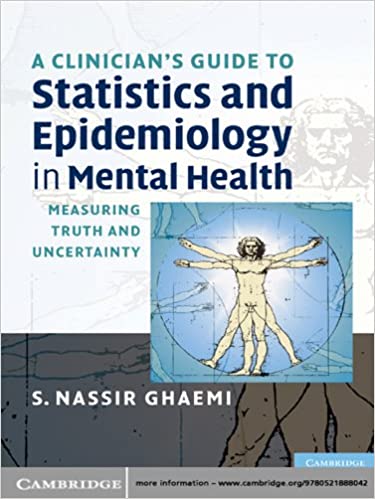Forget about the rather limiting and convoluted title of this book. It’s an outstanding overview of practical clinical epidemiology and biostatistics.
To better understand what this book can do for you, consider, Essential Biostatistics: A Nonmathematical Approach (2015), which I reviewed elsewhere. That book is also a qualitative description of important concepts biostatistics concepts, but it’s biostatistics for the ideal world. On the other hand, A Clinician’s Guide to Statistics and Epidemiology in Mental Health (2009) picks up where Essential Biostatistics leaves off: it shows you how clinical epidemiology and biostatistics should be used in the real world.

The real world, you see, imposes a lot of limitations and traps that you might not have learned too much about in preclinical medicine. For example, there is the corrosive influence of conflicts of interest, publication bias, and the general pressure within academia to publish a lot of studies with “positive” results.
The book helps you navigate these challenges and shows you how to arrive at accurate conclusions despite all the problems with contemporary clinical research. As the author notes:
I believe that the answer to the harmful influence of the pharmaceutical industry in medical research is to become less ignorant about medical research. If we as clinicians knew more, we would not be so open to being manipulated.
A Clinician’s Guide to Statistics and Epidemiology in Mental Health (2009), page 121
To help you know more about how clinical trials actually get done, the book discusses problems such as ghost authorship, lack of “author” control over the primary data, unpublished negative studies and disease mongering (the unnecessary invention and expansion of diagnostic criteria).
All in all, A Clinician’s Guide to Statistics and Epidemiology in Mental Health (2009) is an outstanding introductory book to applied clinical epidemiology. Unfortunately, I don’t think the book has gotten the exposure it deserves because of its rather limiting and convoluted title. (How about Real World Clinical Epidemiology for the next edition?). Nonetheless, it is an exceptionally good book and, in my view, one of the best medical books of all time. I recommend it very highly to later-year medical students, to residents, and to attendings who have a limited background in the subject.


Leave a Reply